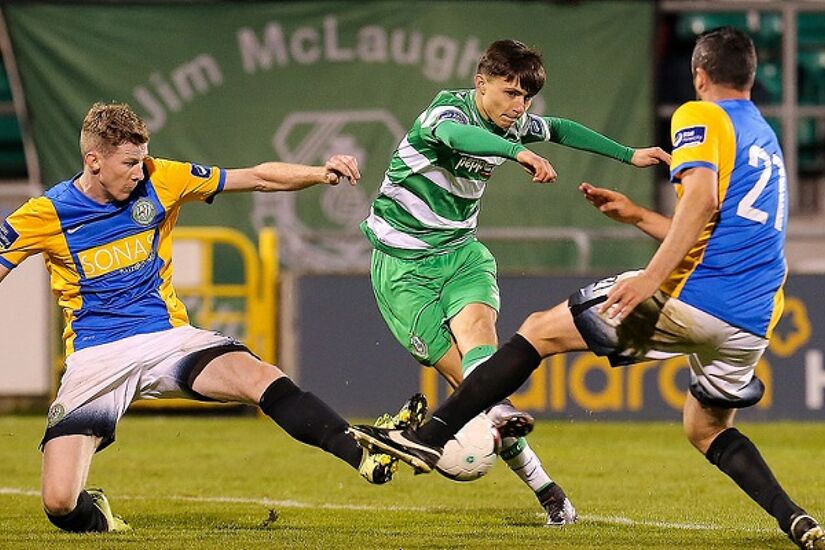Garry Haylock: 'Rovers have the right idea: investing in youth pays'

Credit: Peter Fitzpatrick (ETPhotos)
So, the League of Ireland season has started and already it feels like things are back to normal.
The league table has the familiar ring with Dundalk and Cork City at the top and, although both Bray and Drogheda have started well, I don’t think that there is anyone who would expect any team other than the usual two to be there come the end of the season.
I wonder how many of the supporters are already thinking about next season, or the one after that, or even the one after that?
I can guarantee that there will be ongoing conversations among the senior members of virtually all the League of Ireland clubs, looking at how they can challenge the seemingly unstoppable juggernauts that have dominated the League over the past few campaigns.
It's very easy to say that money talks and if you don’t have it then you can never win the league, but surely the achievements of Leicester have shown that, literally, anything is possible. What I would say is that it won’t happen if you sit around and do nothing.
Better players will not just turn up – you have to go out and scout them, do your due diligence and then try and complete the deal.
The market for players is getting bigger and bigger. On the first day, Limerick striker Rodrigo Tosi scored a hat trick and if you cast an eye over his career, you can see the boy has done some travelling!
It would appear that one of Martin Russell’s staff [strength and conditioning coach Joe Gamble] played with him and recommended him to his manager, and it certainly doesn’t look a bad decision at the moment.
The footballing world is not very big and if you’ve been around for long enough you will have a network of contacts that can help when you need a player.
Being based in London, and having worked as a scout for a variety of League teams as well as managing in the Conference, I have seen a lot of games and over the past few years have spoken many times to a number of people from League of Ireland clubs who wanted information.
However, the Holy Grail for any club is to develop their own players that will progress through a youth set up, into the first team, and then be sold for big money to justify the cost of the facilities, coaching, etc. that produced them in the first place.
In England the Elite Player Performance Plan (EPPP) was introduced in 2011 by the Premier League to try and ensure that everything required to produce better young players in England was in place.
It was forced upon the Football League despite reservations about the opportunity for the bigger clubs to stockpile talent, and it has had mixed success.
It has ensured that the facilities available for young players are unbelievable and for those in the system it has meant that they want for nothing.
However, as Chelsea will testify, producing players good enough to go into the first team and play regularly is not easy, even if you do have millions to spend.
Whilst working at Exeter City in League Two, I was fortunate to coach Matt Grimes, who played almost 100 games before being sold to Swansea City for almost £2 million.
And often, the better players are prepared to remain at lower level clubs because they can be assured that if they are good enough then they will play.
I remember talking with Ollie Byrne at Shelbourne when (it appeared) the club had money to spend and I was adamant that they should buy land and build a dedicated training facility that would give the youth section a permanent home and allow the club to attract the best young players.
Whilst he seemed keen, and certainly investigated the idea, nothing came of it. But I was very interested to see that Shamrock Rovers have now ring-fenced a substantial amount of money to invest in their training ground in South Dublin.
Dropped into the @ShamrockRovers academy on my way home. New Astro looking good pic.twitter.com/S2rDeLoMKk
— Macdara Ferris (@macdarabueller) February 18, 2017
This is the only way that League of Ireland clubs will become even more competitive in European competition, which in turn is the only source of income that can make a difference.
In 2001, whilst playing with Shelbourne, I played against Rosenborg. One the backroom staff was good enough to give us a tour of their facilities, which were incredible.
When I asked our guide how they had managed to pay for everything, he replied that they had played for several years in the Champions League and had re-invested the money received.
For this article, I checked to see how they had done recently. In the last 10 years they have won the league five times, finished second twice and third twice.
It’s something that won’t bear fruit immediately but Rovers have the right idea. Hopefully their fans will appreciate the investment in years to come.
Garry Haylock is a former professional footballer and manager. During his playing career he represented Shelbourne, Dundalk, Linfield and Glentoran, winning the Premier Division twice and the FAI Cup three times.

